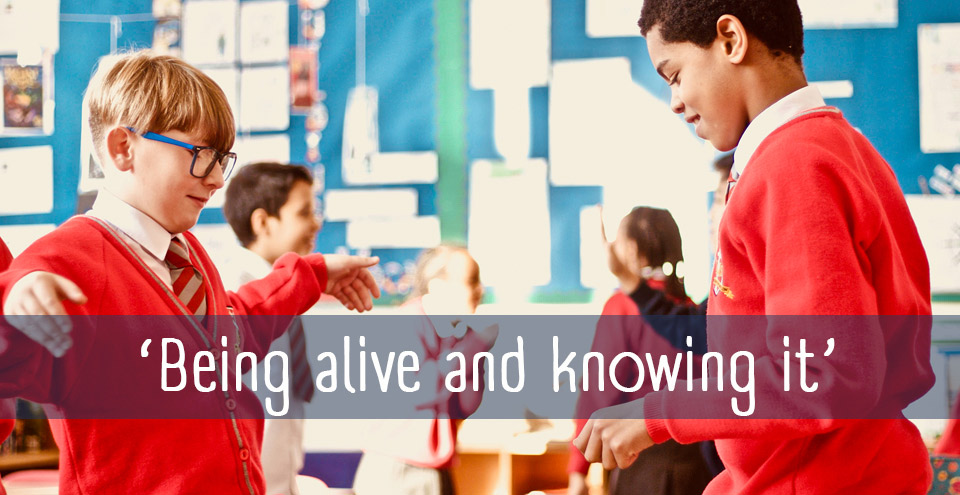Mindfulness. What is it?

At its most basic level, mindfulness helps train your attention to be more aware of what is actually happening, rather than worrying about what has happened or might happen. We learn to bring greater curiosity to whatever it is we experience. Jon Kabat-Zinn, the founding father of secular mindfulness, described this skill as ‘being alive and knowing it’. We hope this short animation explains this more colourfully:
What is Mindfulness?
![]()
A Practice of Stopping and Noticing
‘.b’ stands for ‘stop’ and ‘be’, capturing an important life-skill: being able to step back from the busy-ness of habitual activity and the relentless chatter of the mind. This offers greater space and clarity to make choices that support well-being in many ways.
![]()
A Training in Attention and Awareness
Mindfulness trains us to direct our attention to whatever is happening in the present moment: our breathing, other physical sensations, thoughts, emotions, or even everyday activities like walking and eating. This awareness means we can respond more skilfully to whatever the present-moment throws at us.
![]()
Evidence-based
Whilst still at a relatively early stage, the evidence-base for mindfulness is very encouraging. For example, brain imaging studies show that mindfulness practice reliably and profoundly alters the structure and function of the brain to improve the quality of thought, feeling and concern for others.
![]()
Endorsed by the National Institute of Clinical Excellence
Since 2004, GPs have been able to refer adults on 8-week mindfulness courses to reduce stress and help prevent recurrent depression. Whilst MiSP’s curricula are not therapeutic interventions, the NICE guidelines support the efficacy of mindfulness in mental health contexts.
What Mindfulness is NOT
![]()
Breathing exercises or yoga
Breath plays a useful role in mindfulness as it is always available as an object of attention, but so is the rest of your body, the food you are eating and the person you are listening to. Similarly, whilst learning to be more aware of movement, there is no need for ‘downward dog’ or super flexibility.
![]()
Religious or Spiritual
Silence and contemplation play an important role in the world’s great faiths but the MiSP curricula remain strictly secular. There are periods of sitting quietly and there is appreciation of how extraordinary it is to be human, but the framework is one of common sense and practical application.
![]()
Emptying your mind
Some people think mindfulness is about emptying the mind in some way. Wrong! It is not about freedom from thinking, but freedom with thinking. Thoughts will always come and go; mindfulness helps you relate to thoughts differently and work with them more skilfully.
![]()
Chilling out
The purpose of mindfulness is not to relax; it is to cultivate the skill of noticing what happens in the mind and body however it is: when there is discomfort, anger or stress as much as happiness, joy or ease. By noticing these things as they happen, you create the freedom to choose your response.